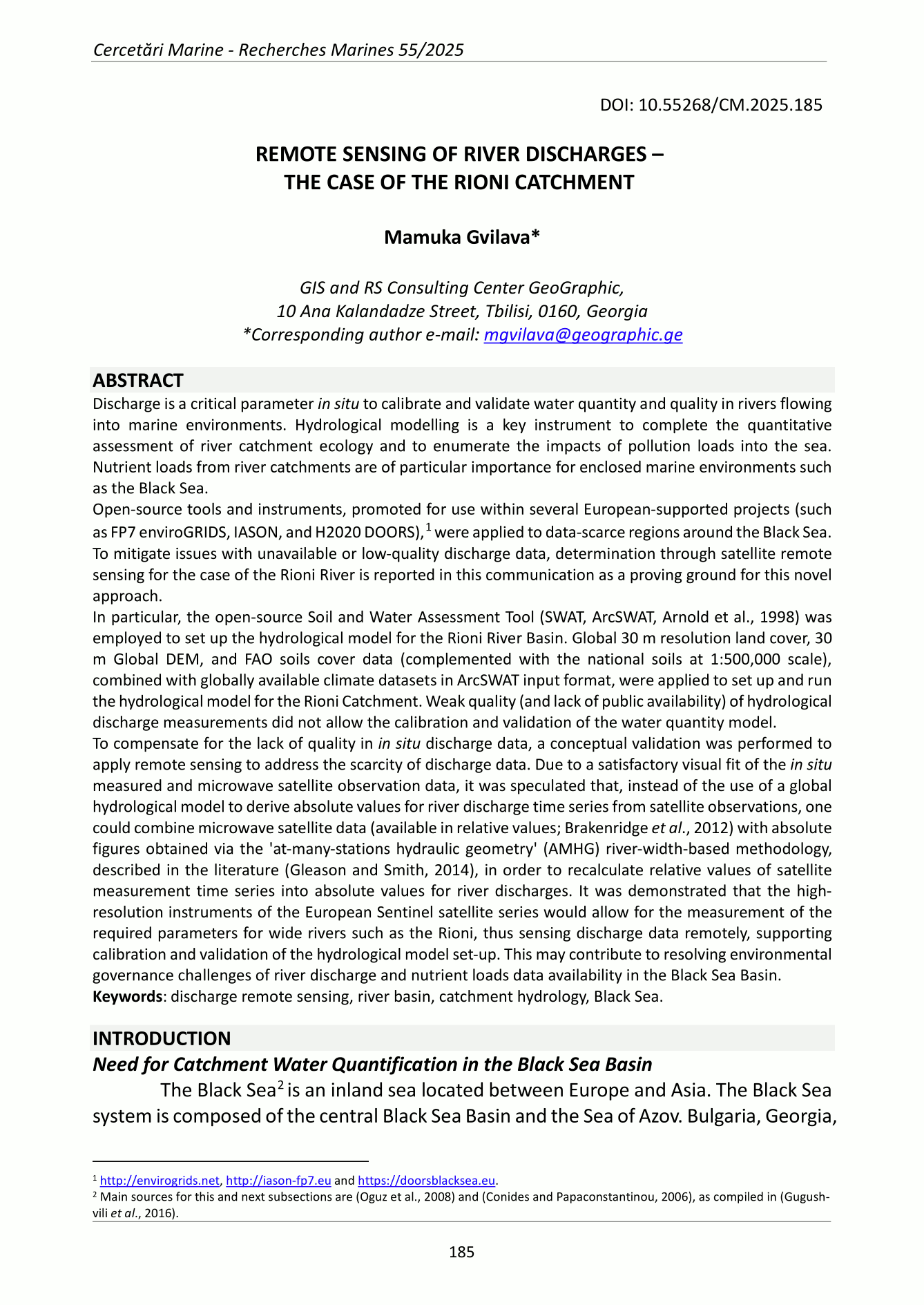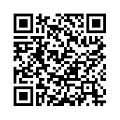REMOTE SENSING OF RIVER DISCHARGES – THE CASE OF THE RIONI CATCHMENT
DOI:
https://doi.org/10.55268/CM.2025.55.185Keywords:
discharge remote sensing, river basin, catchment hydrology, Black SeaAbstract
Discharge is a critical parameter in situ to calibrate and validate water quantity and quality in rivers flowing
into marine environments. Hydrological modelling is a key instrument to complete the quantitative
assessment of river catchment ecology and to enumerate the impacts of pollution loads into the sea.
Nutrient loads from river catchments are of particular importance for enclosed marine environments such
as the Black Sea.
Open-source tools and instruments, promoted for use within several European-supported projects (such
as FP7 enviroGRIDS, IASON, and H2020 DOORS), 1 were applied to data-scarce regions around the Black Sea.
To mitigate issues with unavailable or low-quality discharge data, determination through satellite remote
sensing for the case of the Rioni River is reported in this communication as a proving ground for this novel
approach.
In particular, the open-source Soil and Water Assessment Tool (SWAT, ArcSWAT, Arnold et al., 1998) was
employed to set up the hydrological model for the Rioni River Basin. Global 30 m resolution land cover, 30
m Global DEM, and FAO soils cover data (complemented with the national soils at 1:500,000 scale),
combined with globally available climate datasets in ArcSWAT input format, were applied to set up and run
the hydrological model for the Rioni Catchment. Weak quality (and lack of public availability) of hydrological
discharge measurements did not allow the calibration and validation of the water quantity model.
To compensate for the lack of quality in in situ discharge data, a conceptual validation was performed to
apply remote sensing to address the scarcity of discharge data. Due to a satisfactory visual fit of the in situ
measured and microwave satellite observation data, it was speculated that, instead of the use of a global
hydrological model to derive absolute values for river discharge time series from satellite observations, one
could combine microwave satellite data (available in relative values; Brakenridge et al., 2012) with absolute
figures obtained via the 'at-many-stations hydraulic geometry' (AMHG) river-width-based methodology,
described in the literature (Gleason and Smith, 2014), in order to recalculate relative values of satellite
measurement time series into absolute values for river discharges. It was demonstrated that the high-
resolution instruments of the European Sentinel satellite series would allow for the measurement of the
required parameters for wide rivers such as the Rioni, thus sensing discharge data remotely, supporting
calibration and validation of the hydrological model set-up. This may contribute to resolving environmental
governance challenges of river discharge and nutrient loads data availability in the Black Sea Basin.

Downloads
Published
How to Cite
Issue
Section
License

This work is licensed under a Creative Commons Attribution-NonCommercial-NoDerivatives 4.0 International License.
This is an open access journal, which means that all content is freely available without charge to the user or his/her institution. Users are allowed to read, download, copy, distribute, print, search, or link to the full texts of the articles, or use them for any other lawful purpose, without asking prior permission from the publisher or the author. This is in accordance with the BOAI definition of open access.






